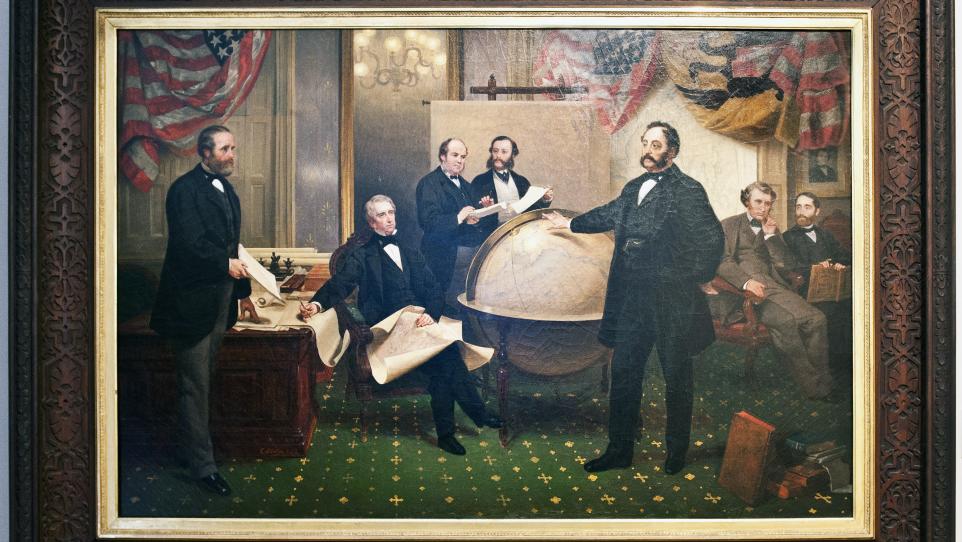
Alaskans will have a unique opportunity to view a painting that intersects with their own fate. A 19th century painting on display at the University of Alaska Museum of the North through the end of February depicts the 1867 signing of the treaty to purchase Alaska.
The exhibit in Fairbanks kicks off a statewide tour to commemorate the sesquicentennial of Alaska.
The artist, German-born Emanuel Leutze, also created one of the better-known paintings in American history, a depiction of Gen. George Washington crossing the Delaware River during the American Revolution.

“The man who made Washington stand up in the boat was also responsible for the most important historical painting in Alaskan history,” said Terrence Cole, a UAF history professor.
In “Signing of the Alaska Treaty,” Leutze imagined the scene at Secretary of State William H. Seward’s office at the State Department in Washington, D.C. during the early morning hours of March 30, 1867. The event occurred after all-night negotiations led to the signing of the Treaty of Cession with Russia and the purchase of Alaska by the United States.
 Leutze’s original painting is about 40 inches high and 60 inches wide. It is part of the permanent collection at the Seward House Museum in Auburn, NY, but it has never been exhibited in Alaska. Cole said Alaskans mistakenly believed for decades that the painting had been lost or destroyed. “However, in the 1930s the painting was discovered to be in the possession of the Seward family.”
Leutze’s original painting is about 40 inches high and 60 inches wide. It is part of the permanent collection at the Seward House Museum in Auburn, NY, but it has never been exhibited in Alaska. Cole said Alaskans mistakenly believed for decades that the painting had been lost or destroyed. “However, in the 1930s the painting was discovered to be in the possession of the Seward family.”
Subsequently, two copies of the historic painting were made in 1934 as part of the Federal Art Project under the Works Progress Administration or WPA. One was given to the U.S. Department of the Interior and the other still hangs in the Alaska State Museum in Juneau.
A statewide team of museums and cultural organizations has organized this touring exhibit of Leutze’s original 1867 painting. The painting traveled to Alaska thanks to help from FedEx and Alaska Airlines. The Alaska Historical Commission funded the project through a program to commemorate the sesquicentennial of the Alaska Treaty of Cession.
Learn more about the Alaska Sesquicentennial project here.








